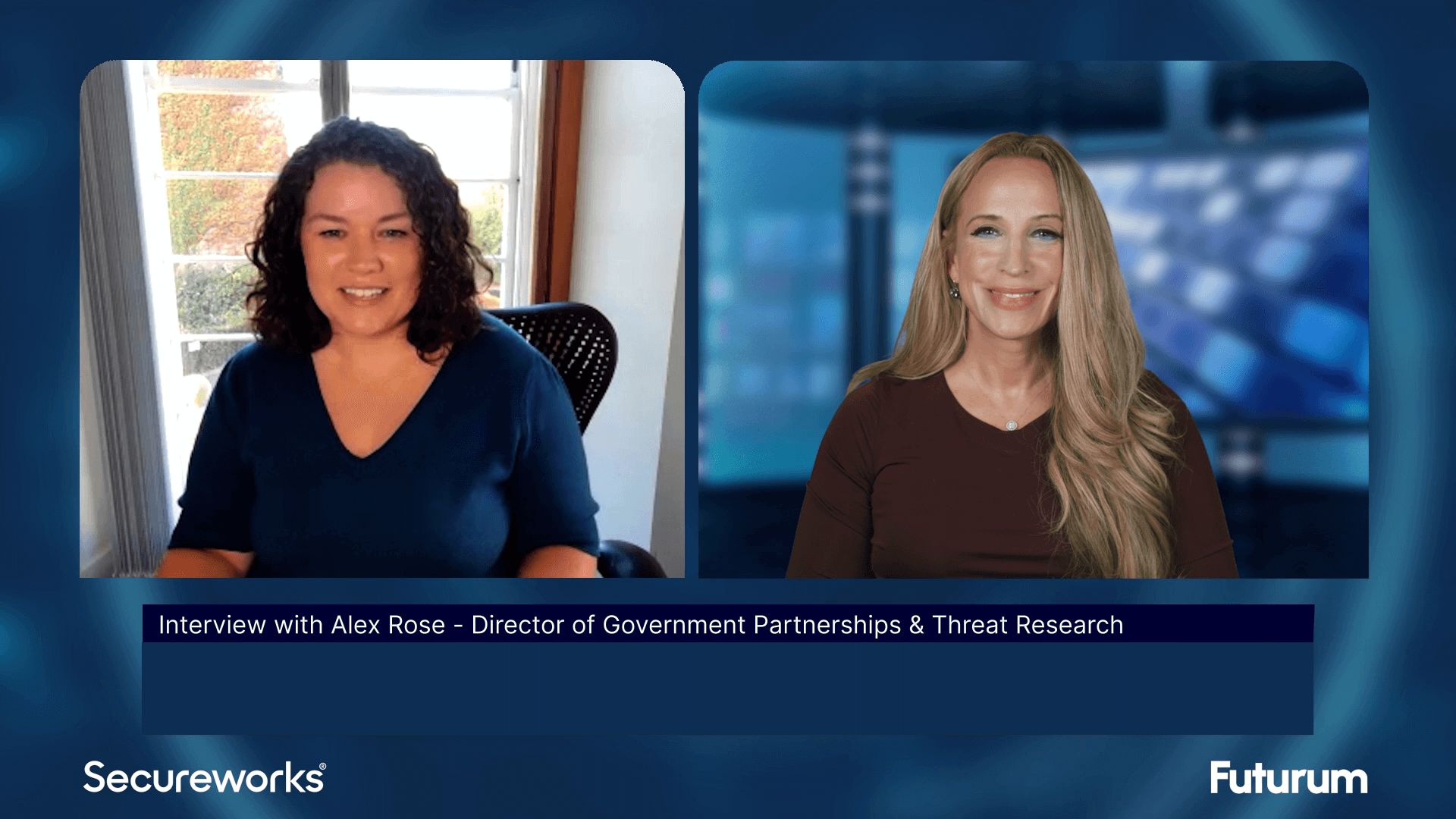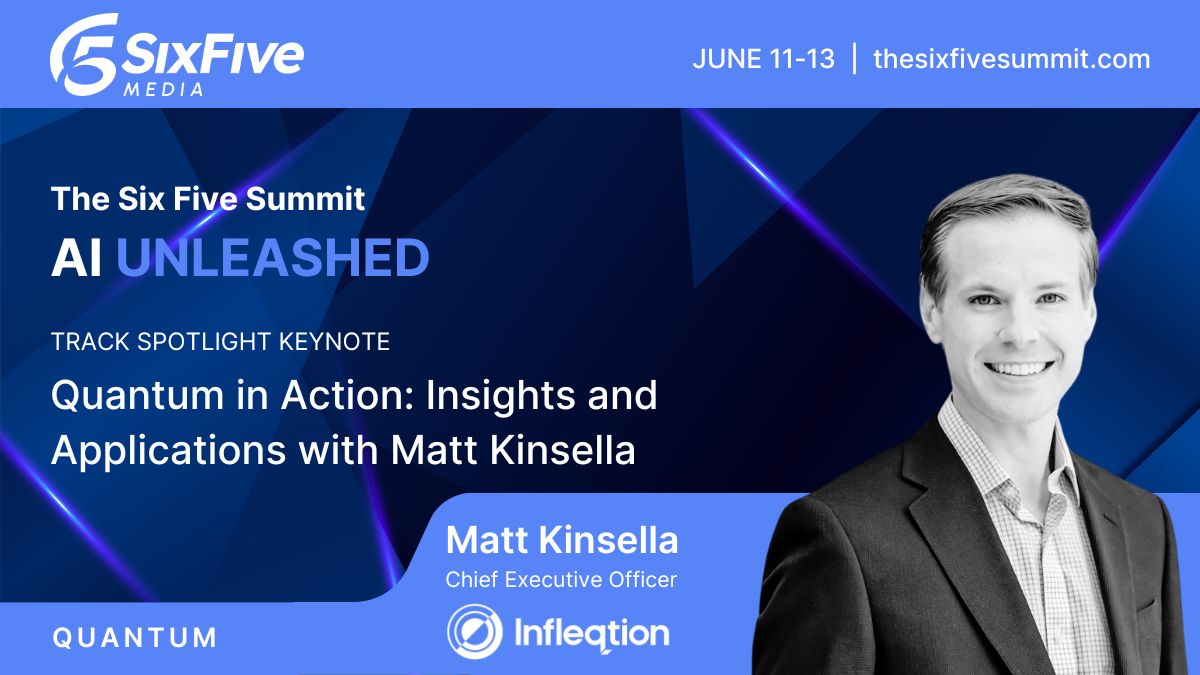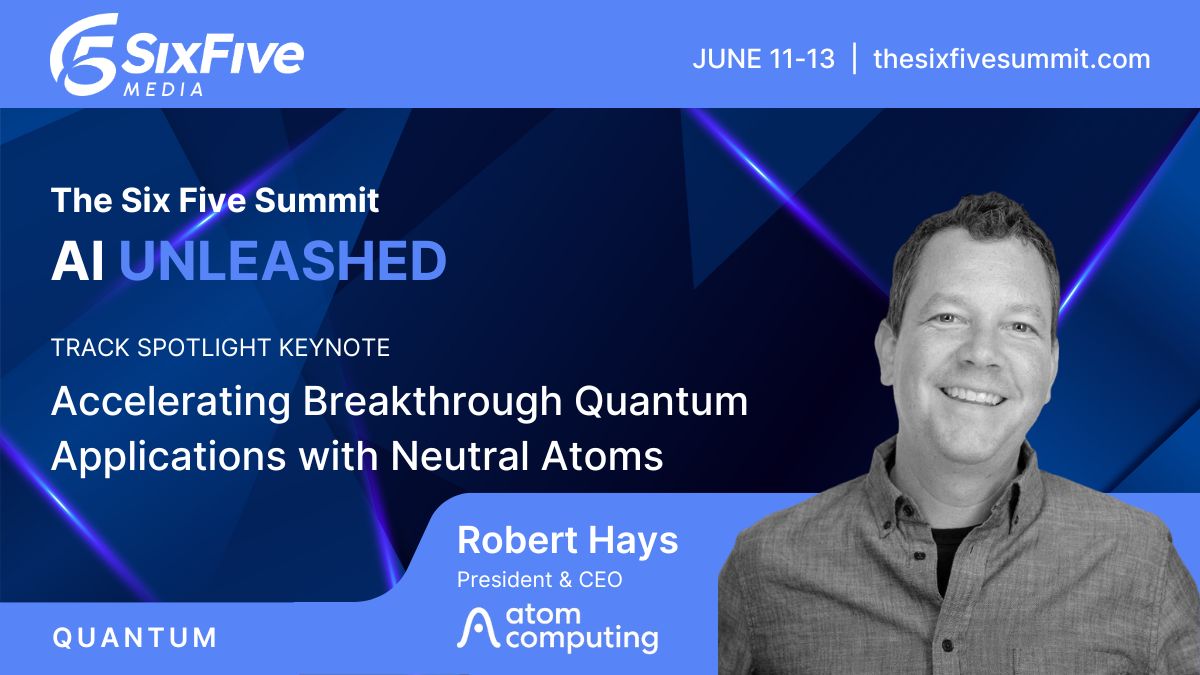Prisma SASE 5G: How Palo Alto Networks is Leveraging AI
Anand Oswal, SVP and GM at Palo Alto Networks, joins host Will Townsend to discuss leveraging AI in cybersecurity with Prisma SASE 5G.
Six Five Media is at Mobile World Congress 2025, bringing you the latest in 5G security! Host Will Townsend speaks with Palo Alto Networks‘ Senior Vice President and GM Anand Oswal, to discuss their pioneering solution: Prisma SASE 5G with Precision AI. Find out how they’re addressing the growing need for robust security in the rapidly expanding 5G landscape.
Key takeaways include:
🔹Precision AI: A unique approach combining machine learning, deep learning, and generative AI for unmatched threat detection and prevention in 5G.
🔹Securing the AI Era: The need to address the security risks posed by the increasing use of AI applications by employees and in AI-powered business applications.
🔹New 5G Monetization Opportunities: Empowering service providers with new ways to monetize their 5G investments through secure connectivity services.
🔹Zero Trust, Simplified for 5G: Prisma SASE 5G enables consistent security policies and simplified management across any user, any device, and any network, simplifying zero-trust implementation.
Learn more at Palo Alto Networks. Watch the full video above, and be sure to subscribe to our YouTube channel, so you never miss an episode.
Will Townsend:
Hi, this is Six Five Media On The Road. We’re at Mobile World Congress, Barcelona 2025, and I’m speaking with Anand Oswal with Palo Alto Networks. Anand, how’s it going?
Anand Oswal:
I’m doing wonderful. How are you, sir?
Will Townsend:
Good. How’s the show been for you so far?
Anand Oswal:
Just busy so far, very busy.
Will Townsend:
Awesome. Well, a big announcement today. Prisma 5G SASE and I want to talk a little bit about that. I want to start with precision AI. I mean, a lot of companies are trying to redefine modern AI. You have something called precision AI, which involves co-pilots to facilitate ease of management and reduce friction, as well as AI secure by design features. So let’s talk a little bit about that.
Anand Oswal:
Okay, so if you think about AI, you think of it in two different aspects. How do you use AI for security and how do you secure the use of AI?
Will Townsend:
Yeah, it’s a classic battle, right?
Anand Oswal:
So the precision AI is about the first part, how we’re using AI to give better security for our customers. And if you think about the evolution of security, if you think about five or six years ago, almost everybody, and some of them even today, the way they did security, is on the constructs of signatures and databases. So if you take a simple example, like say, phishing or URL filtering, the way it was done was that you crawl the Internet, you build a database of every URL in the world. You group them into categories. News websites, adult content, websites of country X, and so on and so forth. We said policies. The issue we saw more than five years ago was that the efficacy of these solutions was dropping because attackers are getting more and more sophisticated. If URLs come up and down in seconds, I don’t have time to build a database.
So what we said is that the classical way of database and signatures are good, but not good enough. We have to look at things in line in real time, look at the metadata to be able to prevent these threats. And that’s where we evolved to deep learning models five years ago across each and every service that we have. In the last two years, we’ve infused that with all the things with Gen AI. Now, of course you can’t use gen AI for security because as you know, it hallucinates. It’s not always accurate in cybersecurity, I have to be accurate. So precision AI is really the combination of what we have used for a decade called machine learning. What we’ve done in the last four or five years with deep learning, infusing all the variability with Genai, and that is precision AI. With precision AI today we are able to stop 30.8 billion attacks.
Will Townsend:
That’s amazing.
Anand Oswal:
Right now, a small number of that, roughly 9 million are net new, which means that attacks that nobody has ever seen before. And the reason we’re able to stop it is because of these four and a half thousand plus deep learning models that we have in precision AI. The second aspect of the question was securing AI by design. Now that also has two parts. One is employees using AI. Everybody’s using gen AI applications. We did a survey which said that 60% of employees use these applications. Whether you like it, you don’t like it, you allow them, you don’t allow them, they’re going to use it, they’re going to get productive, they want to be more efficient, they want to get things done. The problem is that it has no visibility into what they use.
Will Townsend:
It’s a classic shadow it.
Anand Oswal:
Shadow AI. Yeah, exactly. They have no control. What do I allow, Deny, what do I block? They don’t have control over data protection. Like if I by mistake enter code to tune, fine tune. Many of these are not malicious. I just like, I don’t know, I’m entering sensitive data and so I won’t have data protection. And the last and the most important one, which people forget is that threat protection, because all of these applications, they give responses back. Guess what? The responses have links, the responses can have malware. So we want to give visibility control, data protection and threat protection. That’s for the employee’s use. The second part of AI by design, securely, is that every organization I talk to is building an AI Pod application for their end customer to transform their business operations to be more efficient, to give them better experience. Now guess what? Building an AI Pod application is not just taking an existing application, taking a model and you’re done, right?
Will Townsend:
You’ve got prompts, you’ve got a whole host of other challenges.
Anand Oswal:
And you’re bringing in an entire infrastructure of AI data sets, tools, plugins, all of these talk to each other, but guess what, they also talk to the outside world. Yeah, they also access your sensitive data. So how do you make sure that you’re securing your applications, your data and your models? And that’s what we call AI runtime security. And these two together are securing AI.
Will Townsend:
By design, it’s super powerful. But monetization is another challenge for service providers as well. I mean, billions of euros, billions of dollars are spent on deploying infrastructure on license spectrum and it’s hard to monetize all that. So what I really like about this solution as well is you’re providing a monetization opportunity. So can you talk a little bit about that?
Anand Oswal:
You heard it right. Service providers and telcos are spending a lot of money on building 5G capable infrastructure. Now they want to monetize it and we are providing them various mechanisms on how they can do it. First, allowing them to give value added service to their 5G consumers, having secure connectivity. Second, giving enterprises 5G slices of service. So not only do they have security, but then they have guaranteed quality of service and constructs of that sort. And last, which I’m most excited about is what we launched today, Prisma sase, allowing service providers to offer enterprise customers they don’t need to change their endpoint, which are SIM based. They don’t need to change the infrastructure they have. They use the same constructs, simbase authentication, going to the packet core. But now they’re able to give those devices the same security services that they have on the wireline or the WI FI network.
Will Townsend:
The consistency is incredible. And it’s zero friction as well, right?
Anand Oswal:
Yes. Because at the end of the day you want to have any user on any device or any network, the same security services, the same security treatment that is really the construct of zero trust. You can’t have it inconsistent, else you’re disjointed.
Will Townsend:
Right, right. I really love the ecosystem approach that you’re employing as well. Last week you announced a partnership with NTT Data. I actually published a Forbes article and I spoke to the integration that’s occurring there. But, you’re also working with stalwarts like Nokia, NVIDIA, you’re working with mobile network operators. Can you spend a little bit of time, what are your goals there in kind of doing all that integration work?
Anand Oswal:
The goal is simple. We are seeing a surge in private 5G deployments. This is happening in.
Will Townsend:
It’s finally happening right because it’s been a very long tail.
Anand Oswal:
Yes. It’s happening in areas which are, I would say, the slowest to move. Typically.
Will Townsend:
Sure.
Anand Oswal:
Critical infrastructure. Utilities, oil and gas mining, like highly regulated, highly regulated public safety environments. And so we want to make it easier for these organizations, this infrastructure, to adopt a complete private 5G securely. And for that it’s very important that we have the right partnerships, partnerships with the radio vendors, whether it’s Nokia or a bunch of startups in the private 5G space. And we have Celona, Ataya, Druid and so on and so forth. But also partners with system mitigators with different kinds of people who are building private 5G networks. So the customers have a very seamless experience in how they can deploy. Because at the end of the day we want to make sure that they are having, they’re thinking about security from the get go, building secure private 5G networks, having granular policy controls based on the MZ, the IMEI or any other construct that they want. So it’s very simple to deploy and easy for them to replicate what they build in one infrastructure, one factory flow, and take it to the others.
Will Townsend:
Sure. I mean the scalability of that is phenomenal. Right. And you’re not, you know, you’re leveraging best practices with partners and ultimately at the end of the day, you’re providing more flexibility to meet customers and partners where they’re at as well. Right. Well, hey, it’s been a great conversation, my friend, so good to see you. But as we close, you touched on zero trust. And if you could spend just a little bit of time on why it’s so important. I mean, so many security vendors out there are claiming zero trust. From my perspective, there aren’t a lot of complete end to end solutions. I think Palo Alto Networks is unique in that it does provide an end to end solution. But talk to the importance of zero trust and how you’re approaching it differently.
Anand Oswal:
Let me tell you the first thing. Zero trust is the most abused word in cybersecurity.
Will Townsend:
It’s so bad, it’s almost like AI.
Anand Oswal:
So if you ask five people, what is zero trust? You get eight answers. The way we think about zero trust simplistically is no notion of implied trust.
Will Townsend:
Least privilege access.
Anand Oswal:
Least privilege access. So think about it. I’m in the office. I use my badge, I walk into the office with my managed laptop. I get no different treatment from a security perspective. As I’m home on my unmanaged device, my personal laptop, on my phone, I have consistent security policies, no matter where I am, I have consistent policies. No matter what device I’m using, managed, unmanaged. I have this consistent security policy. If I’m on the corporate WI Fi or the 5G network, or the WiFi or the satellite in the plane, the data can be anywhere, the application can be anywhere. I call it the any, any factor. Any user on any device, on any network, accessing any application and any data, AAA quadruple A. You want to make sure that it’s consistently secure.
Will Townsend:
Right.
Anand Oswal:
You have the least privileged access constructs you talked about and you’re able to manage them through a single pane of glass. So like, if you think of the solution I talked about, Prisma, SASE 5G, but you’re also going to go on home and access WiFi. You want to be able to have the same policy, the same notions of what you’re doing and manage it consistently. And that’s really what we’re driving to. Zero trust across the enterprise.
Will Townsend:
Yeah, you know, and at the end of the day that consistency. Let me stop. At the end of the day, that consistency with policy management. Eliminate security gaps. Right. I mean, that’s often what happens when attackers are able to move laterally through a network.
Anand Oswal:
Almost every single breach. If you do a postmortem guess, what do you hear from that report that was there? If you did A, B and C, you could have avoided it. Which begs the question, why didn’t we do A, B and C? Because it’s hard. You’re using 30 different tools, 30 different point products, you have 30 different consoles, you’re not having. And then what happens? That most organizations will then resort to the least common denominator of policies because it’s hard and complicated. So we really want to use the whole construct of zero trust and “platformization” to simplify and unify network security, reduce all the operational complexity, simplify the operations, and reduce the ROI. And yes, you’re going to save money. But guess what the most important goal is? They’re going to get a more superior security outcome. That is the goal of “platformization”.
Will Townsend:
Yeah, for sure. And you’ve executed quite well on that over the years as well. But I think if I were to summarize, Prisma, SASE 5G, it’s protecting mobile networks. These networks are massive, millions of users. The attack surface is huge. So that’s definitely a benefit. But at the end of the day, you’re also providing a new monetization opportunity for service providers as well. So that’s a win. Win.
Anand Oswal:
Yeah, absolutely. And also they get consistency across. Wired, wireline, WI fi. Same policy constructs and simplified operations.
Will Townsend:
Yeah, it’s the AAA.
Anand Oswal:
There you go.
Will Townsend:
This has been a great conversation. This is Six Five Media On The Road at Mobile World Congress, Barcelona. It’s been a great conversation and I encourage you to tune into the other videos that we’ll be recording this week at the event.
Other Categories
CYBERSECURITY

Threat Intelligence: Insights on Cybersecurity from Secureworks
Alex Rose from Secureworks joins Shira Rubinoff on the Cybersphere to share his insights on the critical role of threat intelligence in modern cybersecurity efforts, underscoring the importance of proactive, intelligence-driven defense mechanisms.
quantum

Quantum in Action: Insights and Applications with Matt Kinsella
Quantum is no longer a technology of the future; the quantum opportunity is here now. During this keynote conversation, Infleqtion CEO, Matt Kinsella will explore the latest quantum developments and how organizations can best leverage quantum to their advantage.

Accelerating Breakthrough Quantum Applications with Neutral Atoms
Our planet needs major breakthroughs for a more sustainable future and quantum computing promises to provide a path to new solutions in a variety of industry segments. This talk will explore what it takes for quantum computers to be able to solve these significant computational challenges, and will show that the timeline to addressing valuable applications may be sooner than previously thought.







